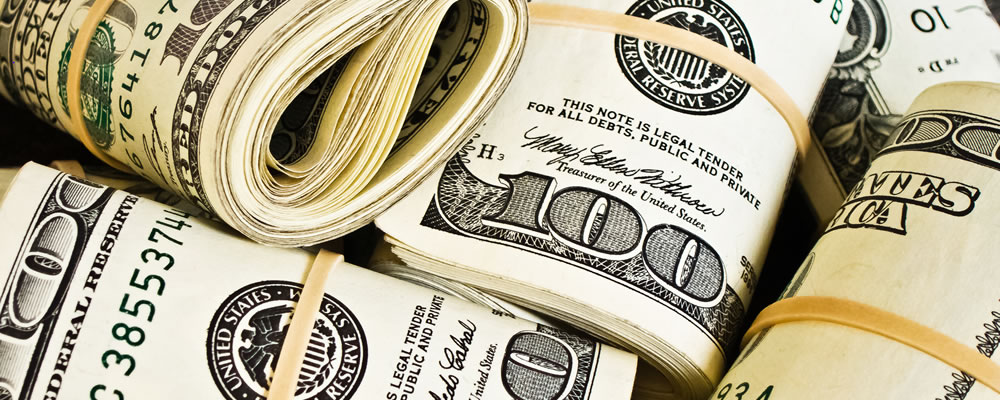Data from the Eurozone has continued to disappoint, with the August Manufacturing PMIs offering further evidence of slowness within the currency union and weighing heavily on the Euro to US Dollar exchange rate.
- Eurozone inflation failed to edge higher in August – Speculation over possibility of further ECB easing dented Euro
- Stronger ADP Employment Change boosted US Dollar demand – Investors encouraged by signs of continued labour market tightening
- EUR USD exchange rate extended downtrend on poor Manufacturing PMIs – Sector growth expected to remain weak in coming months
- Non-Farm Payrolls forecast to trigger ‘Greenback’ volatility – Positive report expected to increase odds of imminent Fed rate hike
Disappointing Manufacturing Data Prompted US Dollar (USD) Weakness
The EUR USD exchange rate returned to an uptrend in response to the latest US manufacturing data, which did not paint an encouraging picture. As the ISM Manufacturing Index dropped sharply from 52.6 to 49.4 in August the odds of an imminent Federal Reserve interest rate hike seemed to diminish.
Consequently, the EUR USD exchange rate was trending higher around 1.1195 towards the close of Thursday’s European session.
(Previously updated at 12:02 on 01/09/2016)
Even though risk appetite generally improved on Thursday the US Dollar remained on a stronger footing against many of its rivals, with investors continuing to price in a higher probability of a Fed rate hike.
Odds of ECB Easing Increased by Weaker-than-Expected Eurozone Inflation
Investors were not impressed by August’s Eurozone Consumer Price Index data, with inflationary pressure in Germany and the currency union as a whole failing to strengthen as forecast. As Eurozone inflation remained sluggish at 0.2% on the year markets were inclined to reassess the success of the European Central Bank’s (ECB) existing monetary loosening program. This naturally raised speculation that further easing could be on the horizon, as policymakers struggle to stimulate stronger levels of inflation within the domestic economy. Consequently the Euro to US Dollar (EUR USD) exchange rate was prompted to extend its downtrend, dipping to a fortnightly low of 1.1127.
While the debate over the odds of the Federal Reserve opting to raise interest rates again before the end of the year continued to rage, the appeal of the ‘Greenback’ (USD) somewhat improved. Encouragement came in the form of the ADP Employment Change, which showed a stronger increase in the number of employed than had been forecast. Markets took this as a positive sign ahead of the more critical Non-Farm Payrolls report, although the two measures have not always shown a strong correlation. Confidence in the US Dollar was also tempered by weak manufacturing and home sales data.
Disappointing Eurozone Manufacturing PMIs Weighed on Euro (EUR) Demand
With the mood towards the Euro (EUR) already soured by the recent inflation results the finalised raft of August Manufacturing PMIs did nothing to improve the outlook of the single currency. While the French figure was revised lower the Italian PMI also unexpectedly dipped into contraction territory, indicating that weakness continues to dog some of the larger members of the currency union. As a result the overall Eurozone measure dipped to 51.7, a three-month low that offers little encouragement for an imminent rebound, with Chris Williamson, Chief Economist at Markit, noting:
‘There is some suggestion of a Brexit impact, however, and growth may wane further in September after new orders growth slipped to a one-and-a-half year low. Anecdotal evidence suggests that the strengthening of the Euro and reduced sales to the UK were partly to blame for the order book slowdown.’
Although the latest Chinese data pointed towards the world’s second largest economy escaping a hard landing, the consequent increase in market risk appetite failed to dent the US Dollar on Thursday morning. While Chicago Federal Reserve President Charles Evans maintained a dovish tone with regards to monetary policy the fact that he is not a voting member of the Federal Open Market Committee (FOMC) this year prevented markets taking too much notice of the comments.
EUR USD Exchange Rate Forecast: Steady Non-Farm Payrolls Predicted to Boost US Dollar
Eurozone data ahead of the weekend is not expected to offer any particular rallying point to the Euro. July’s Producer Price Index is forecast to have weakened on the month, another negative sign for domestic inflationary pressure that could undermine the single currency further. A positive Spanish Unemployment Change result may shore up the EUR USD exchange rate, though, given the high levels of unemployment that have been plaguing the country.
Greater volatility is likely to centre on the Non-Farm Payrolls report, with the data critical in assessing the odds of the next Fed rate hike coming in the near future. While the headline figure is expected to have weakened on the month that is unlikely to particularly hinder the Fed adopting a more hawkish outlook. Given the relative tightness of the domestic labour market anything short of a severe downside surprise is expected to boost the US Dollar, to the detriment of EUR exchange rates.
Current EUR, USD Exchange Rates
At the time of writing, the Euro to US Dollar (EUR USD) exchange rate was slumped in the region of 1.1142, while the US Dollar to Euro (USD EUR) pairing was trending higher around 0.8972.



